Plagiarism in the USA: How to Stay Safe and Avoid Violations
Ashley Merit
Content writer and editor for Netus.AI
Table of Contents
Plagiarism in the USA. In the United States, plagiarism is a serious issue that is stringently regulated by academic institutions and governed by copyright policies. Not only can it lead to severe consequences for students, but it also has the potential to damage an author’s reputation if their work is found to be plagiarized. As such, it is crucial for writers to ensure the originality of their content and uphold academic integrity.
To help prevent copyright infringement and maintain credibility, authors should utilize copyright infringement checkers as vital tools in preserving their work’s integrity. These tools not only support writers in validating the originality of their content but also assist them in adhering to ethical standards and avoiding any legal concerns.
Key Takeaways
- Plagiarism in the United States is a serious issue rigorously monitored by academic institutions and copyright policies.
- Utilizing copyright infringement checkers can help authors ensure the originality of their work and avoid legal concerns.
- Upholding academic integrity and full knowledge of copyright laws significantly contributes to maintaining credibility and preserving authors’ reputations.
How Can International Students Deal With Plagiarism in the US?
International students often face challenges adapting to the US academic environment as plagiarism norms might differ significantly from their native cultures. To avoid falling afoul of these rules, it is essential for students to familiarize themselves with the copyright law of the United States.
In American universities, strict measures are practiced to address both intentional and accidental plagiarism. To prevent committing plagiarism, international students can engage in the following practices:
- Improve their understanding of plagiarism concepts and regulations in the US.
- Discuss with instructors and tutors on the right method of citation in academic papers.
- Develop strong note-taking, reading, and revising skills.
- Seek help from peers and instructors during the drafting process.
- Perform thorough proofreading and use plagiarism detection tools before submitting their work.
By following these guidelines and maintaining open conversations with university staff, international students can ensure adherence to academic integrity and avoid repercussions associated with plagiarism violations.
The Difference Between Plagiarism and Copyright
Plagiarism and copyright are two distinct concepts in the realm of academic writing, particularly in the United States. Understanding the difference between them is crucial for students to avoid inadvertently committing plagiarism.
Plagiarism refers to the unethical act of using someone else’s work without providing proper credit to the source or author. This can involve copying phrases, quotes, writing styles, or entire ideas. It is considered “stealing” and is against the law. Some key aspects of plagiarism are:
- Violating academic ethics and norms
- Offending the original author
- Potentially infringing on copyright rules
In some instances, students may even exchange papers for money, which is a severe offense.
On the other hand, copyright infringement occurs when someone fails to cite sources correctly, as defined by a country’s copyright law. In the United States, copyrights were established to uphold academic integrity, encourage creativity, and promote original ideas.
The United States Copyright Office, a division of the Library of Congress, handles all copyright registrations in the country and maintains their records. This office administers copyright law, ensuring each application or claim is thoroughly examined under the copyright act before acceptance.
In summary, plagiarism and copyright differ in their nature and consequences. Plagiarism is an ethical violation that involves using someone else’s ideas, words, or work without proper acknowledgment, while copyright infringement relates to the legal aspect of improperly citing sources or violating copyright laws. Both should be diligently avoided to maintain academic integrity and respect original creators’ rights.
What Authorities Do Copyright Holders Possess?
Copyright holders, whether individuals or organizations, have various rights concerning their intellectual property. These include:
- Revenue generation: They can claim any revenue generated from their work once it’s published.
- Reproduction: They may create multiple copies, sound recordings, or phonographic records of their work.
- Distribution: They have the authority to distribute copies or recordings for public sale.
- Ownership transfer: They can lend, rent, or lease their intellectual property to others.
- Public performances: In cases of motion pictures and audiovisual works, copyright holders can publicly display or perform their work.
- Usage in other mediums: For literary works, the copyrighted material can be adapted into different mediums.
- Public showcasing: In other art forms, copyright holders can display their creations publicly.
- Digital audio transmission: In the case of sound recordings, they are allowed to perform their work publicly through digital audio transmission.
To respect intellectual property and avoid plagiarism, proper credit must be given to the original creator. Additionally, copyright protection helps ensure that the revenue generated from the work is distributed fairly and correctly.
How to Avoid Copyright Infringement
Copyright infringement can lead to severe consequences for both small and large companies. To avoid violating someone’s intellectual property rights, it is crucial to adhere to specific guidelines and take the necessary precautions. The following are two key methods to avoid copyright infringement:
Giving Credit or Asking Permission
When using someone’s content or image, it’s essential to obtain the creator’s permission. Websites that host images or other resources often include a licensing policy, which should be carefully reviewed before using any materials. This policy may state how to credit the creator or indicate that a fee must be paid to use the work.
Attributing the original creator and incorporating accurate references and in-text citations can help avoid copyright infringement. When directly quoting a passage, be sure to use quotation marks to properly credit the original author.
Utilizing Plagiarism or Duplicate Content Detectors
Occasionally, especially when working quickly, it’s possible to forget citations or quotation marks. Though unintentional, these oversights can have significant consequences. Plagiarism or duplicate content detectors can identify copied content and help prevent potential issues.
By employing these tools, any unintentional instances of copied content can be quickly spotted and properly credited to avoid both plagiarism and copyright infringement.
In conclusion, respecting the intellectual property rights of others requires diligence and adherence to established guidelines. Taking the time to credit creators, read licensing policies, and use plagiarism detectors can help ensure a plagiarism-free and legally sound work.
How Copyleaks Assists International Students
With Copyleaks, international students can confidently submit their work without concerns about plagiarism. This advanced plagiarism checker uses Machine Learning and AI technology, setting it apart from alternatives like Grammarly, Zotero, and RefWorks. A key benefit is its compatibility with 100+ languages and multiple file types. Moreover, users can even scan a hard copy by simply taking a picture and uploading it to Copyleaks.
Frequently Asked Questions
What are the most effective strategies to prevent plagiarism in academic writing?
- Properly cite the sources you use in the required citation format.
- Paraphrase the original content by using your own words and understanding.
- Integrate quotes and in-text citations to highlight direct statements from the original source.
- Manage and organize your research sources using notetaking tools and software.
Which tools can help in detecting plagiarism before submitting work?
There are several plagiarism detection tools available, such as:
- Turnitin
- Grammarly
- Copyscape
- Plagscan
- Unicheck
Why is precise citation of sources crucial in research papers?
Citing sources accurately is essential to:
- Give credit to the original authors and their work.
- Assist readers in locating the original source material.
- Demonstrate academic integrity and ethical behavior.
- Ensure that arguments and conclusions are supported by evidence.
How can learners ensure proper paraphrasing to evade plagiarism?
Follow these steps to effectively paraphrase:
- Read the original source carefully and understand the meaning.
- Write the same idea using your own words and sentence structure.
- Compare your paraphrased content with the original source to ensure you have not copied phrases or sentence structure.
What actions should be taken to prevent unintentional plagiarism when taking notes?
- Write notes using your own words and understanding.
- Immediately jot down the source information for each note.
- Highlight quotes and their sources in your notes.
- Use a consistent method to distinguish between your own thoughts and information from sources.
What are the consequences of plagiarism within academic and professional settings in the USA?
Plagiarism has severe consequences, such as:
- Automatic failure of the paper or the class.
- Damaged academic or professional reputation.
- Legal consequences, including fines and imprisonment, in cases of copyright infringement.
- Loss of job or expulsion from an academic institution.
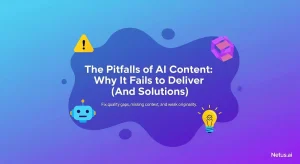
The shortcomings of content generated by AI | NetusAI
Discover why fast, high-volume AI content often fails to deliver real results. Learn about the crucial missing feedback loop and how implementing performance tracking can transform your AI content strategy.
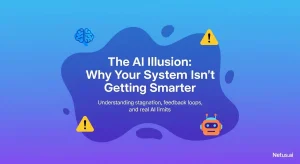
The illusion of AI: Your system's intelligence gap | NetusAI
Stop wasting marketing spend! Most AI tools don’t learn from results, causing content stagnation and low engagement. Discover why your generative AI isn’t getting smarter and what system actually learns and optimizes content.
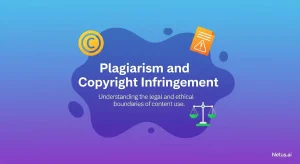
Plagiarism and copyright infringement | NetusAI
Learn the distinct differences between plagiarism and copyright infringement. Understand the ethical and legal implications and get practical strategies for avoiding both academic and creative work with NetusAI.
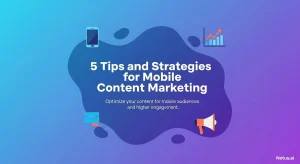
Tips and strategies for mobile content marketing | NetusAI
Optimized for mobile-first indexing, learn 5 essential strategies to capture attention, enhance engagement and drive leads and sales with your mobile content marketing.
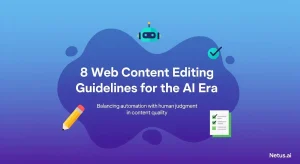
Web content editing guidelines for the AI era | NetusAI
Review web content editing guidelines for the AI era. Learn how to edit AI-generated content, ensure authenticity and optimize for SEO and readability.
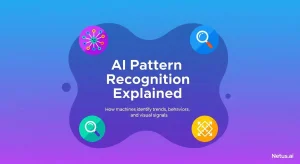
Explaining AI pattern recognition | NetusAI
AI pattern recognition enables machines to identify trends for diverse applications, from detecting plagiarism to fraud. Discover its processes, models and real-world benefits.
